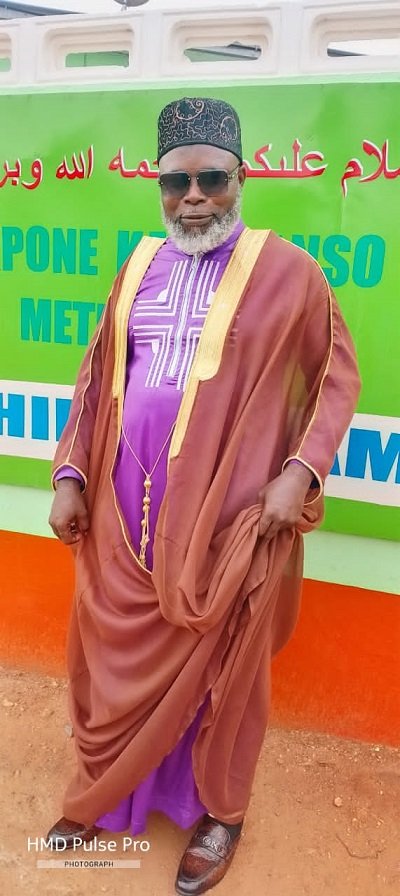Fruitful Living
Kingdom of God (Part 2)

But seek first the kingdom of God and his righteousness, and all these things will be added to you. (Matthew 6:33)
INTRODUCTION
In the Old Testament, the idea of God’s kingdom is often expressed through the concept of the reign of Yahweh, the God of Israel, over His people. The Israelites believed that God was their true king and that He would establish His kingdom on earth.
We bring you this week, the concluding part of the “KINGDOM OF GOD” as presented in the New Testament. Please enjoy and share with others!
NEW TESTAMENT
In the New Testament the fullest revelation of God’s divine rule is in the person of Jesus Christ. His birth was heralded as the birth of a king. “He will be very great and will be called the Son of the Most High. The Lord God will give Him the throne of His ancestor David. And He will reign over Israel forever; His Kingdom will never end!” – Luke 1:32-33.
The ministry of John the Baptist prepare for the coming of God’s kingdom. “Repent of your sins and turn to God, for the Kingdom of Heaven is near – Matthew 3:2”
The crucifixion was perceived as the death of a king. “A sign announced the charge against Him. It read, “The King of the Jews.” Two revolutionaries were crucified with Him, one on His right and one on His left. The people passing by shouted abuse, shaking their heads in mockery. “Ha! Look at you now!” they yelled at Him. “You said you were going to destroy the Temple and rebuild it in three days. Well then, save yourself and come down from the cross!” The leading priests and teachers of religious law also mocked Jesus. “He saved others,” they scoffed, “but He can’t save Himself! Let this Messiah, this King of Israel, come down from the cross so we can see it and believe Him!” Even the men who were crucified with Jesus ridiculed Him.” – Mark 15:26-32.
Jesus preached that God’s Kingdom was at hand (“And from the time John the Baptist began preaching until now, the Kingdom of Heaven has been forcefully advancing, and violent people are attacking it.” – Matthew 11:12) His miracles, preaching, forgiving sins, and resurrecting are an in-breaking of God’s sovereign rule in this dark, evil age.
God’s Kingdom was manifested in the church. Jesus commissioned the making of disciples on the basis of His kingly authority. Peter’s sermon at Pentecost underscored that a descendant of David would occupy David’s throne forever, a promise fulfilled in the resurrection of Christ. Believers are transferred from the dominion of darkness into the Kingdom of the Son of God.
God’s Kingdom may be understood in terms of “reign” or “realm”. Reign conveys the fact that God exerts His divine authority over His subjects/ kingdom. Realm suggests location, and God’s realm is universal. God’s reign extends over all things. He is universally sovereign over the nations, humankind, the angels, the dominion of darkness and its inhabitants, and even the cosmos, individual believers, and the church.
In the Old Testament the Kingdom of God encompasses the past, present, and future. The Kingdom of God had implications in the theocratic state. The kingdom of God is “already” present but “not yet” fully completed, both a present and future reality. The kingdom was inaugurated in the incarnation, life, ministry, death and resurrection of Jesus. God’s Kingdom blessings are in some measure possessed now. People presently find and enter God’s Kingdom. God is now manifesting His authoritative rule in the lives of His people. God’s Kingdom, however, awaits its complete realisation. His people still endure sufferings and tribulations. When fully consummated, hardships will cease. Kingdom citizens currently dwell alongside inhabitants of the Kingdom of darkness. God will eventually dispel all darkness. The final inheritance of the citizens of God’s Kingdom is yet to be fully realised. The resurrection body for life in the eschatological Kingdom is a blessing awaiting culmination.
God’s kingdom is soteriological in nature, expressed in the redemption of fallen persons. The reign of Christ instituted the destruction of all evil powers hostile to the will of God. Satan, the “god of this age”, along with his demonic horde, seeks to hold the hearts of individuals captive in darkness. Christ has defeated Satan and the powers of darkness and delivers believers. Although Satan still is active in this present darkness, his ultimate conquest and destruction are assured through Christ’s sacrificial death and resurrection. Sinners enter Christ’s kingdom through regeneration.
Many of Jesus’ parables emphasise the mysterious nature of God’s kingdom. For example, an insignificant mustard seed will grow a tree, as God’s kingdom will grow far beyond its inception, “He told them another parable: “The kingdom of heaven is like a mustard seed, which a man took and planted in his field. Though it is the smallest of all seeds, yet when it grows, it is the largest of garden plants and becomes a tree, so that the birds come and perch in its branches” – Matthew 13:31-32. The kingdom of God is like seed scattered on the ground. Some seed will fall on good soil, take root, and grow. Other seed, however, will fall on hard, rocky ground and will not grow. Likewise, the kingdom will take root in the hearts of some but will be rejected and unfruitful in others (Matthew 13:3-8). As wheat and tares grow side by side, indistinguishable from each other, so also the sons of the kingdom of God and the sons of the kingdom of darkness grow together in the world until ultimately separated by God.
Although closely related, the kingdom and the church are distinct. George Eldon Ladd identified four elements in the relationship of the kingdom of God to the church. The kingdom of God creates the church. God’s redemptive rule is manifested over and through the church. The church is a “custodian” of the kingdom. The church again witnesses to God’s divine rule.
The kingdom of God is the work of God, not produced by human ingenuity. God brought it into the world through Christ, and it presently works through the church. The church preaches of the kingdom of God and anticipates the eventual consummation.
STAY BLESSED!
For further inquiries, please contact us on Tel. Nos. 0243588467 or 0268130615
Email: saltnlightministries@gmail. com
Website: saltandlightministriesgh. org
By Dr. Joyce Aryee, the author
Fruitful Living
Eid-ul-Adha: A living legacy of faith, sacrifice, and devotion

We begin in the name of Allah, the Most Merciful, the Most Compassionate. We praise Him, seek His help and forgiveness, and seek refuge in Him from the evils of our souls and the wrongs of our actions.
May peace and blessings be upon the Prophet Muhammad (peace be upon him), his family, his noble companions, and all those who follow his path until the Day of Judgment.
Understanding the essence
of Eid-ul-Adha
Eid-ul-Adha, the Festival of Sacrifice, is one of the two major Islamic celebrations observed by Muslims across the world.
It commemorates the unwavering submission of Prophet Ibrahim (Abraham, peace be upon him) to Allah’s command when he was prepared to sacrifice his beloved son Isma’il (Ishmael, peace be upon him). Allah, in His infinite mercy, intervened and replaced the son with a ram, thus honouring Ibrahim’s sincerity and faith.
This moment of sacrifice is recorded in the Qur’an: “Then when they had both submitted and he put him down upon his forehead, We called out: ‘O Ibrahim! You have fulfilled the vision.’ Indeed, We thus reward the doers of good.” (Surah As-Saffat, 37:103–105)
This act of obedience is not merely a historical account. It is a living symbol that forms the essence of Eid-ul-Adha.
Ibrahim (A.S): The Architect
of Submission
Before the moment of sacrifice, Prophet Ibrahim and his family played critical roles in establishing Islam’s foundational pillars:
1. The building of the Ka‘bah
Prophet Ibrahim and his son Isma’il were chosen to construct the Ka‘bah, the sacred House of Allah in Makkah. The Qur’an records this noble moment:
“And [mention] when Ibrahim was raising the foundations of the House and [with him] Isma’il, [saying], ‘Our Lord, accept [this] from us. Indeed, You are the Hearing, the Knowing.’”
(Surah Al-Baqarah 2:127)
This structure remains the spiritual centre of Muslim worship, facing which over a billion Muslims direct their daily prayers.
2. The struggle of Hajar (Hajara) between Safa and Marwa
The mother of Isma’il, Hajar (Hajara), exemplifies a profound lesson of patience and faith. Left in the barren valley of Makkah with her infant, she ran between the hills of Safa and Marwa, desperately searching for water. Her perseverance was rewarded when the well of Zamzam sprang forth at the feet of her baby.
Her sincere struggle is now ritualised in Hajj as the Sa‘i between Safa and Marwa—a reminder of the role of women, the power of du‘a, and the value of trust in Allah’s provision.
Sacrifice at Mina and the
Rites of Jamarat
During Hajj, pilgrims reenact Ibrahim’s confrontation with Shaytan at Mina, where he rejected the devil’s temptation and cast stones at him. This act is now observed in Hajj as the ritual of stoning the Jamarat, symbolising the rejection of evil, temptation, and disobedience.
It is a vivid spiritual lesson: the path to Allah is one of resistance to distraction and sin, and one must be prepared to fight these forces with unwavering faith.
The essence of Arafat in Hajj
The Prophet Muhammad said:“Hajj is Arafah.” (Sunan al-Tirmidhi, 889)
Standing on the plain of Arafat, in deep humility and supplication, is the heart of Hajj. It represents the Day of Judgment, when all of humanity will stand before their Creator. The Prophet said: “There is no day on which Allah frees more people from the Fire than the Day of Arafah.” (Sahih Muslim, 1348)
For pilgrims, Arafat is a time of repentance, reflection, and renewal— and for non-pilgrims, fasting on that day is highly recommended.
Three core lessons from the
Sacrifice of Prophet Ibrahim
(A.S.)
1. Absolute obedience to Allah
Ibrahim’s willingness to sacrifice his son teaches that the essence of faith is unquestioning obedience to Allah. He prioritised divine command over emotion, logic, or comfort.
Takeaway:
In our lives, we must also be ready to put aside our desires, egos, and even attachments if they conflict with Allah’s instructions. This may involve sacrifices such as waking up for Fajr, staying away from haram income, or being truthful in difficult situations.
2. Sincere intention and inner sacrifice
The real essence of the sacrifice lies in the heart’s submission to Allah.
It is neither their meat nor their blood that reaches Allah, but it is your piety that reaches Him.”
(Surah Al-Hajj 22:37)
Takeaway:
Every act of worship should be grounded in sincerity. Whether it is prayer, charity, or sacrifice, what matters most is the purity of our intention.
3. Sacrifice for the greater good
The legacy of Eid-ul-Adha teaches us that sometimes, faith requires us to give up what we love for a greater purpose. Sacrificing wealth, time, or status in the path of Allah or for the benefit of others leads to spiritual elevation.
Takeaway:
Use your resources such as time, money, skills, for acts of benefit: support the poor, educate the young, assist the sick, and build your community.
Celebrating Eid-ul-Adha: A
Festival for all Muslims
Even for those who do not go on Hajj, Eid-ul-Adha holds immense significance. Muslims across the world participate in the act of Qurbani (sacrifice) to honor the tradition of Ibrahim (A.S.).
Types of animals and their
symbolism
Permissible animals include goats, sheep, cows, and camels. Each must meet a minimum age and be free of defects. The sacrificed animal is then divided into three parts: one for the family, one for relatives and friends, and one for the poor and needy.
This distribution reflects the spirit of sharing, compassion, and social responsibility—values at the heart of Islam.
The eternal message of Eid-ul-Adha
Eid-ul-Adha is not merely a celebration; it is a living tradition that calls us to:
• Submit like Ibrahim,
• Strive like Hajar,
• Sacrifice like Isma’il,
• Reflect like the pilgrims at Arafat.
May this Eid awaken within us a renewed commitment to obedience, sincerity, and compassion.
Let us make every Eid-ul-Adha a step forward in our spiritual journey, embodying the values of submission, sacrifice, and service to humanity. I wish every Muslim Eid Mubaarak
By Imaam Alhaji Saeed Abdulai
(Kpone Katamanso Metropolitan Chief Imaam)
Fruitful Living
Steps taken by government to combat illicit drugs (Final part)
The Minister for the Interior, Muntaka Mohammed-Mubarak, has reaffirmed the government’s commitment to combating drug abuse and illicit trafficking for a safer environment which would
go a long way to make Ghana a drug-free country. 3News.com (2025)
Solutions to Illicit Drugs from the Islamic perspective
are comprehensive and emphasise of both prevention and treatment:
Tarbiyah (Islamic nurturing): Instilling strong Islamic values from childhood through Qur’anic education, regular prayer, and association with righteous companions.
Community preaching (Da’wah): Imams must consistently raise awareness during khutbahs and Islamic programs about the dangers of drugs and the beauty of a sober, productive life.
Faith-based rehabilitation: Mosques and Islamic centers can partner with medical institutions to offer Qur’an therapy, spiritual counseling, and structured recovery programs.
Islamic youth clubs: Providing youth with halal entertainment, mentorship, and purposeful engagement can steer them away from harmful peer groups.
Zakat and Sadaqah: Channelling funds to support families of victims and establishing centres for rehabilitation.
Role of Parents, Society, Muslim Chiefs and Imams:
Parents must be vigilant and provide emotional support. A loving, nurturing home reduces a child’s vulnerability to drugs.
Society should de-stigmatize addiction. Drug users should be seen as patients needing healing, not criminals deserving rejection.
Muslim Chiefs must lead community campaigns, setting moral examples and supporting policy enforcement.
Imams must be more than religious leaders—they must become counsellors, educators, and advocates. Their leadership can shift public perception and guide collective action.
Conclusion
Illicit drugs pose one of the most dangerous threats to our society, undermining our religious values, harming our youth, and destroying our future. The Islamic position is clear and
Unequivocal: such substances are forbidden due to their destructive consequences on all aspects of life. Islam does not merely condemn the act but calls for a holistic response—spiritual, social, and structural.
As a society, particularly as Muslims, we must rise to confront this crisis with faith, compassion, and commitment. We must not only preach against drugs but actively work to rehabilitate victims, educate the next generation, and partner with public institutions to create a society of wellness and righteousness.
Recommendations
1. Introduce Islamic drug awareness education in madrasas and public schools, using Quran and Hadith-based materials to instill moral responsibility.
2. Create partnerships between the Ghana Narcotics Control Commission, Ghana Health Service, and Muslim organisations to develop culturally sensitive rehabilitation centres.
3. Train Imams and teachers in basic mental health and drug abuse counselling to serve as front-line responders in communities.
4. Utilise Friday sermons (khutbahs) nationwide to address the dangers of drug abuse periodically and provide practical steps for prevention.
5. Encourage community surveillance, where parents, chiefs, and youth groups report dealers and suspicious activities to the authorities.
6. Establish mentorship programmes in every Muslim community where successful, drug-free role models mentor youth.
7. Form interfaith coalitions, working across religious lines to tackle the drug menace as a national threat rather than a religious issue.
8. Provide job skills training for rehabilitated victims, helping them reintegrate into society and live dignified, self-sufficient lives.
By Imam Alhaji Saeed Abdulai, the Author







